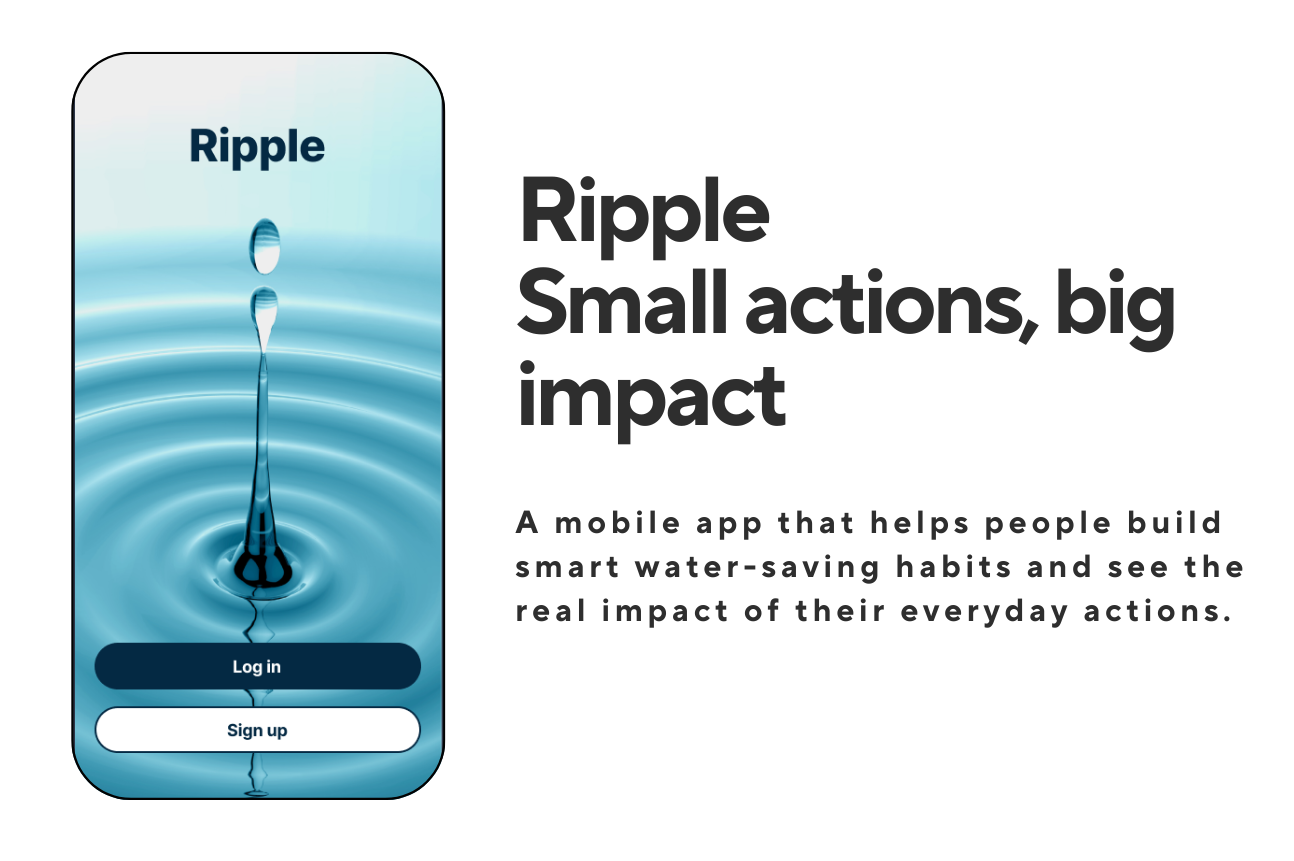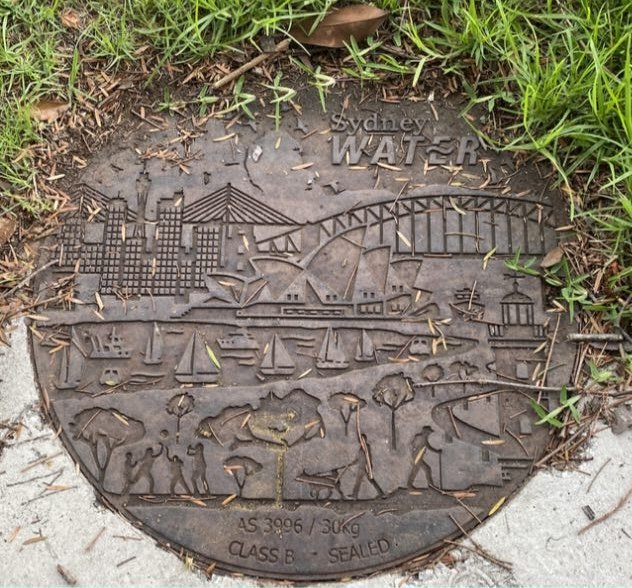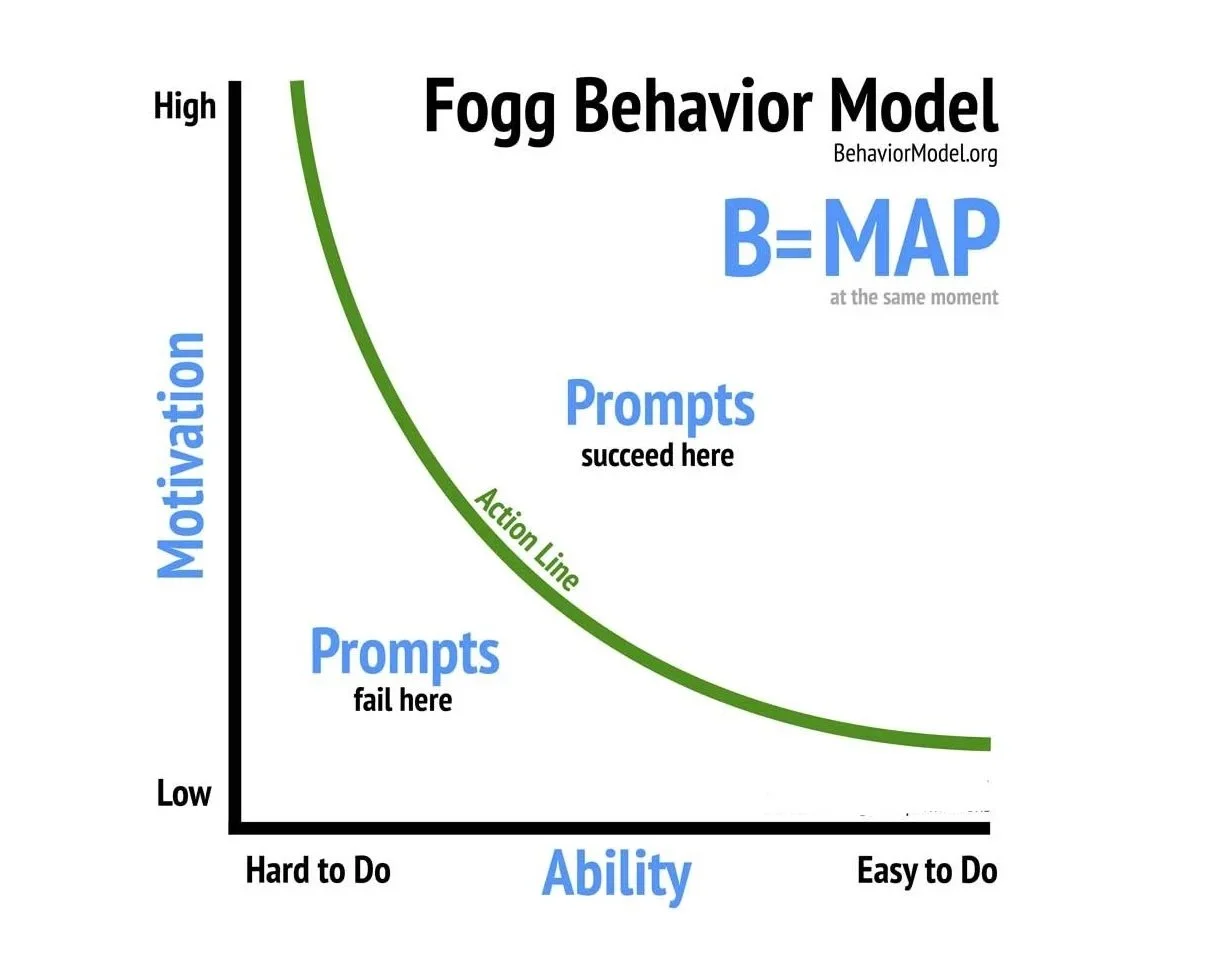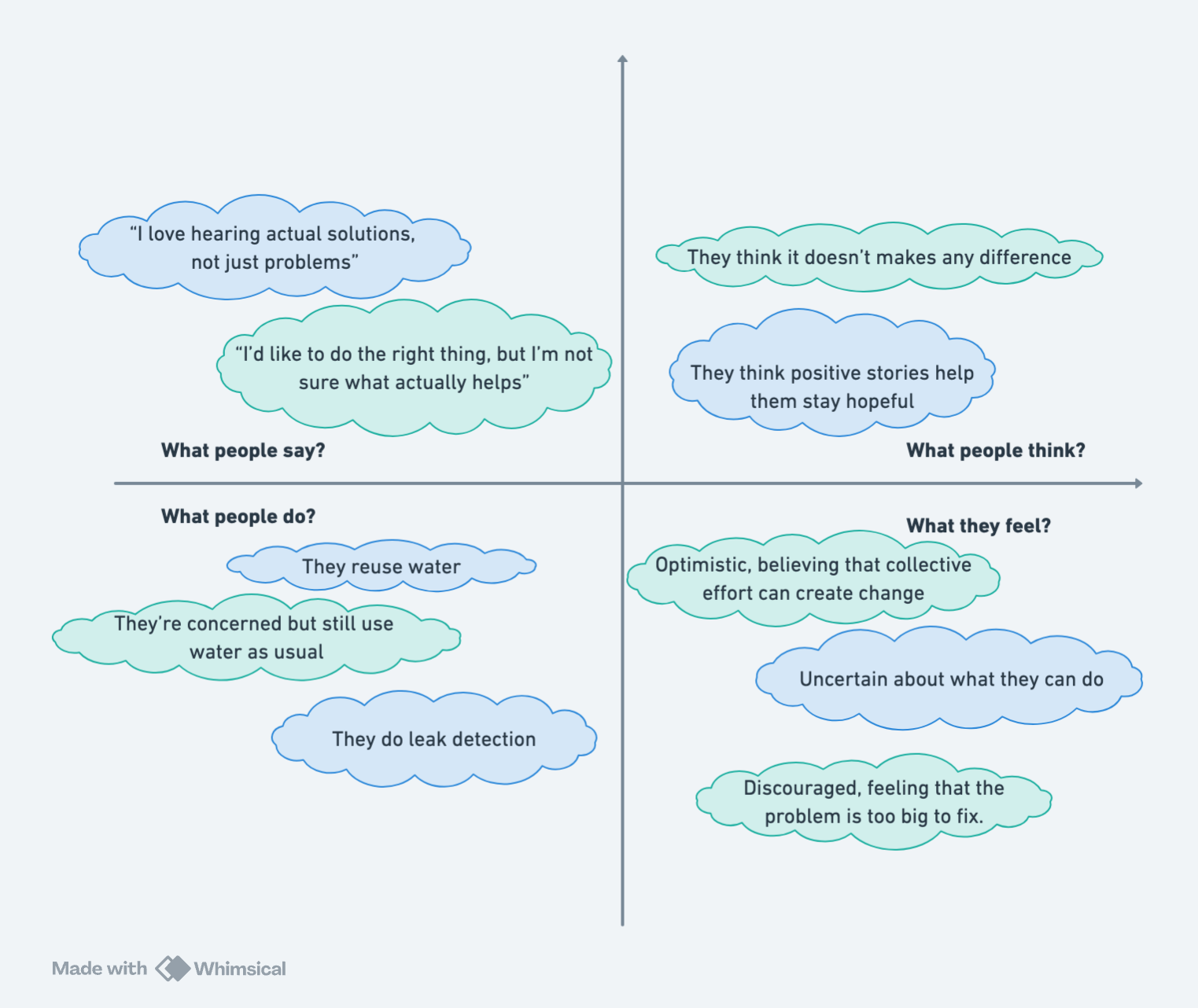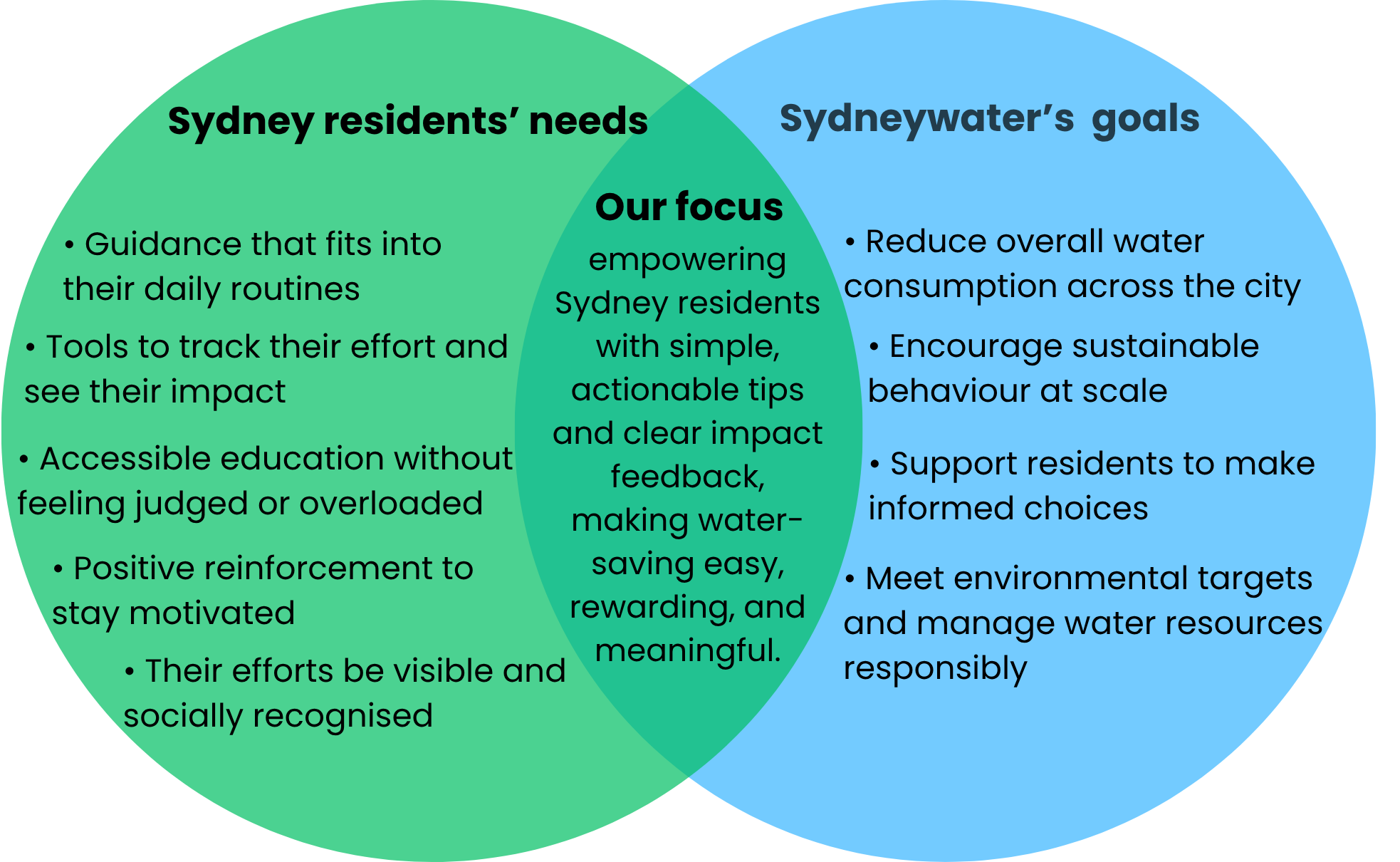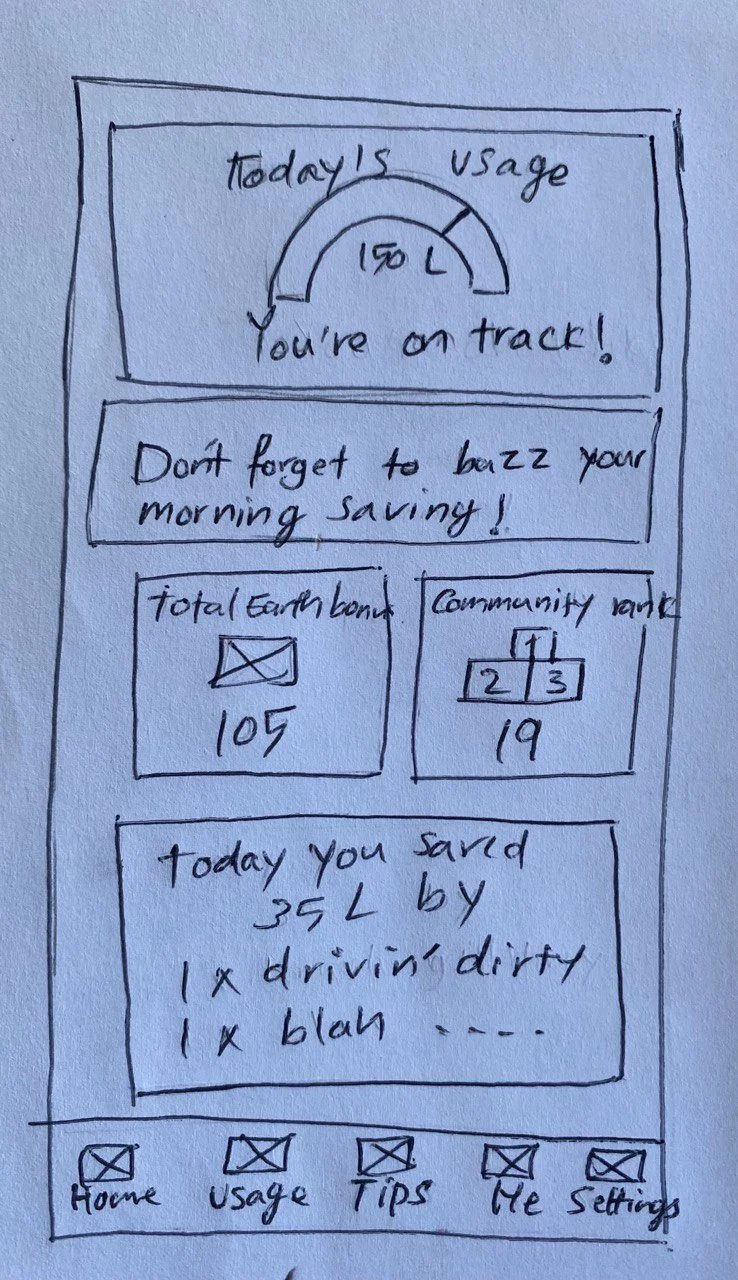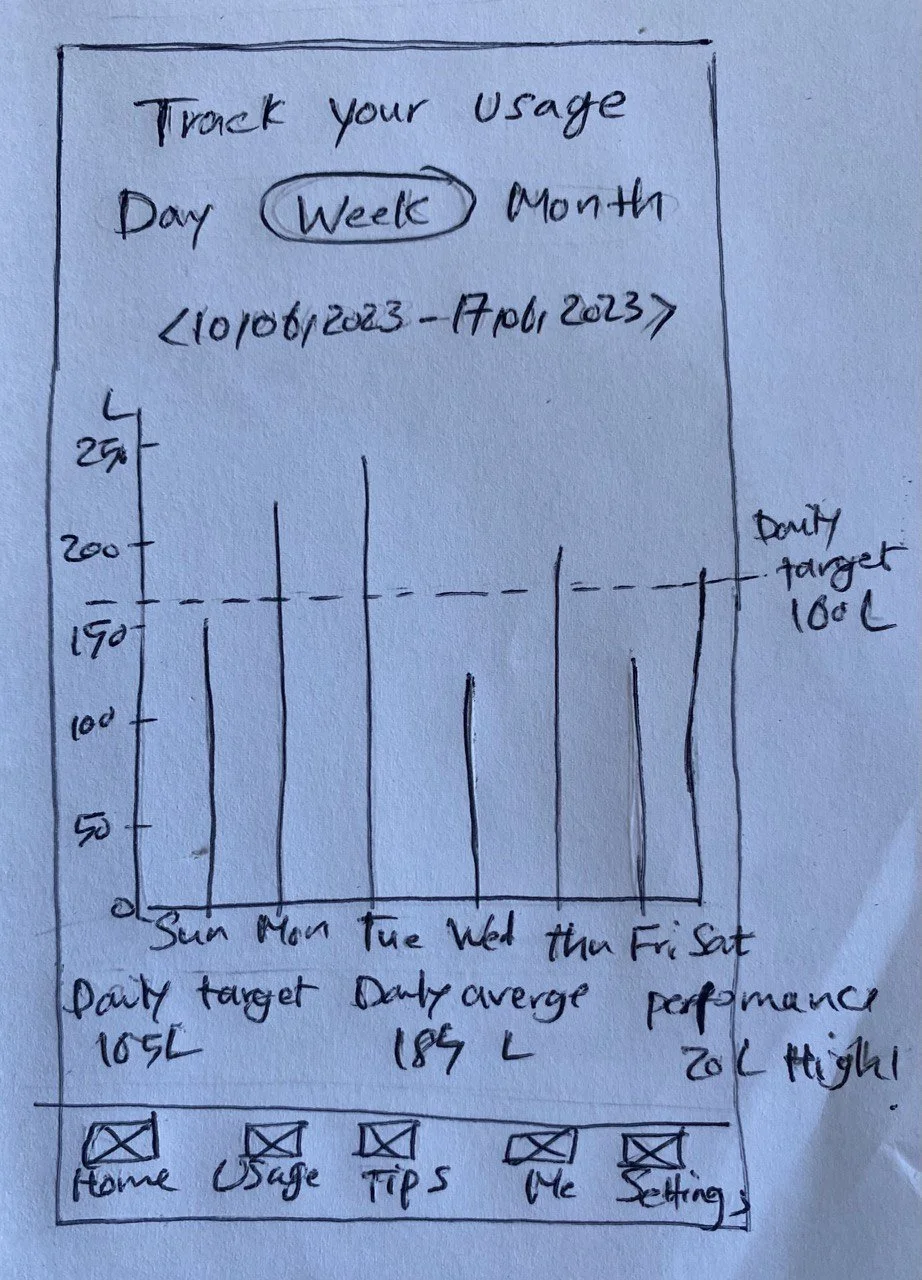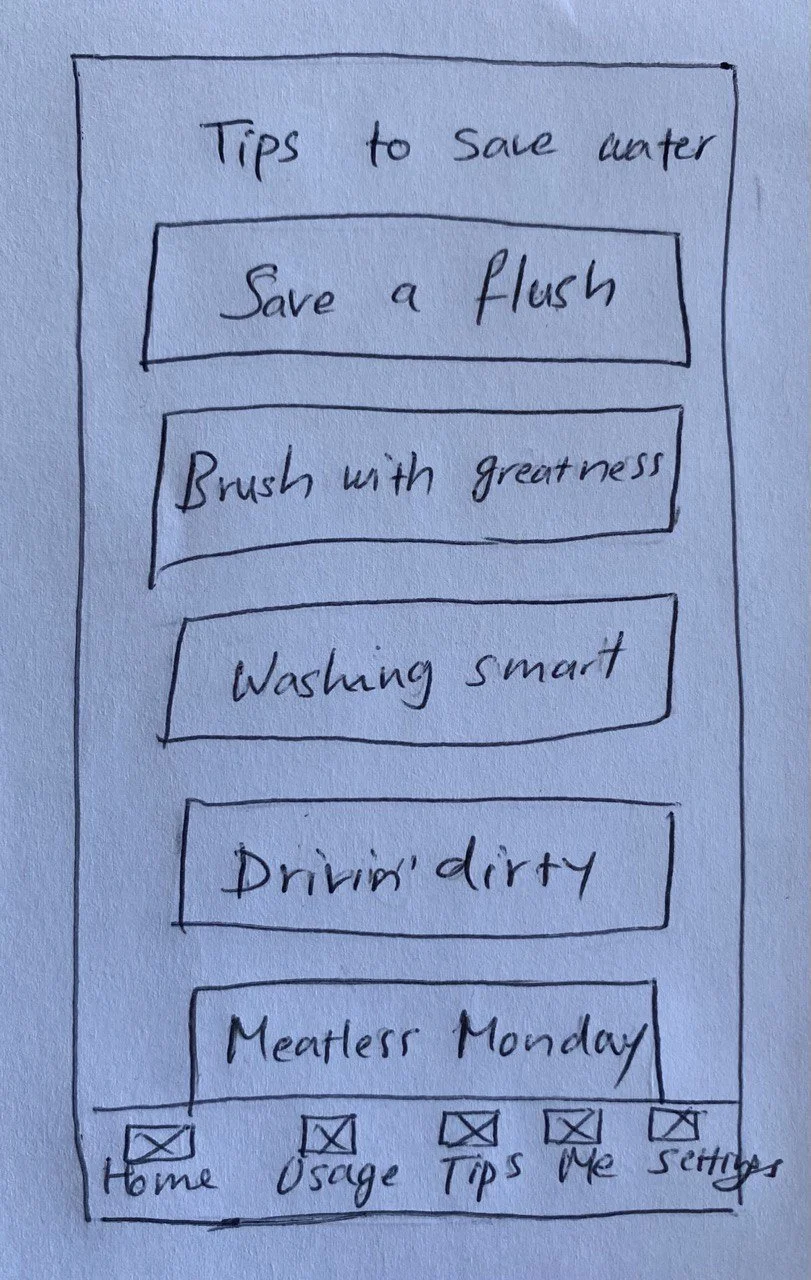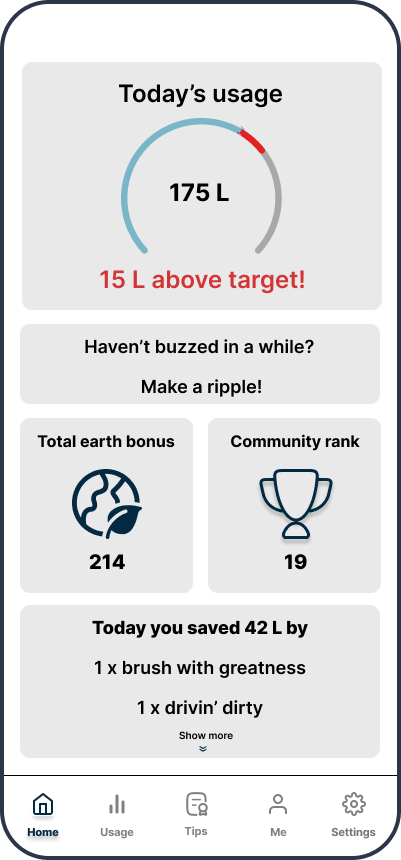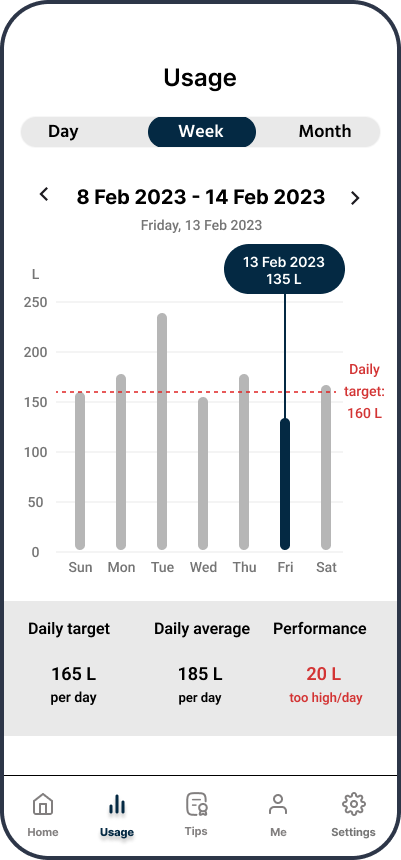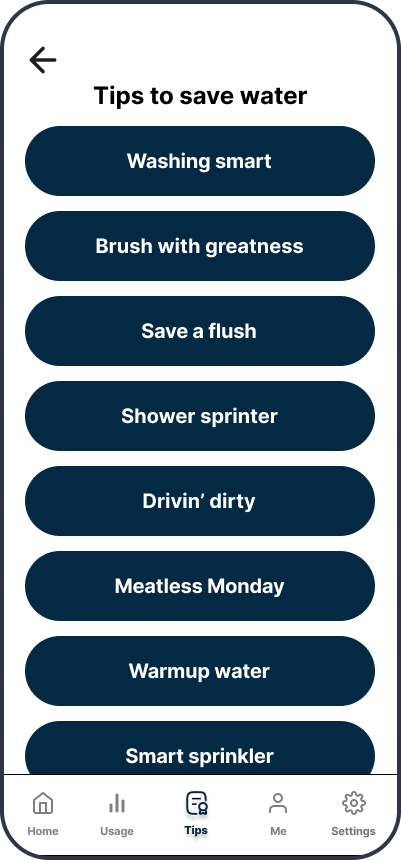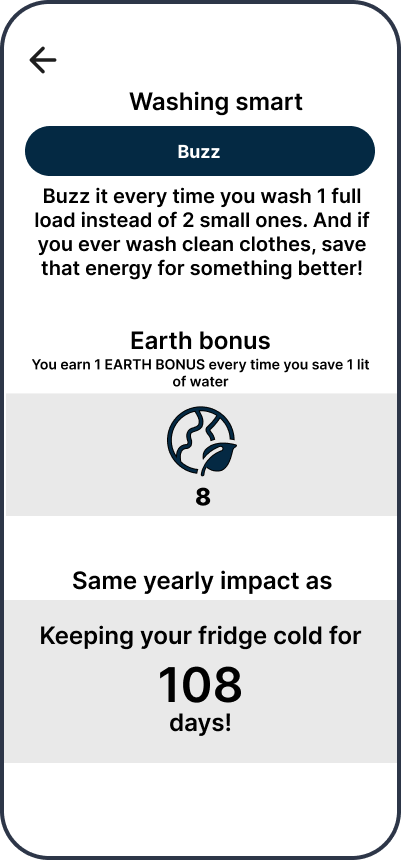Project overview
Introduction
Sydney Water delivers safe, reliable water to over 5 million people, but using it wisely is up to everyone. This project explores engaging ways to promote smarter habits, using BJ Fogg’s model to make water-saving actions sustainable.
Objective
Design a solution that actively fosters sustainable water-saving habits by enabling simple daily actions and clear feedback on their long-term impact.
My Role
This project was developed as part of an instructor-guided UX Design course, where I was responsible for the entire UX process, including research, strategy, design, prototyping, and user testing.
Tools Used
Figma
Research
Business analysis
I started with a business analysis to understand Sydney Water’s current approach to encouraging people to use water responsibly and adopt water-saving habits. While Sydney Water offers useful resources like online tips, smart meters, and education programs, these rely on people actively seeking them out. And even if they do, they are not motivating enough to change behaviour in the long run.
I identified gaps in Sydney Water’s services, like:
They don’t proactively reach out to people.
Their resources don’t reach enough users.
There’s little ongoing support to keep people motivated.
So the solution needed to be more engaging, accessible, and effective to make a real impact.
Competitive Analysis
I looked at sustainability and utility tracking apps to find out what works best.
Key takeaways:
Simple UI with data visualisations improves user retention.
Personalised goals keep users engaged.
Many apps lacked actionable steps beyond tracking data.
BJ Fogg's Behaviour Model
I looked into BJ Fogg’s Behaviour Model, developed by the American behaviour scientist. The model explains that:
A behaviour happens when motivation, ability, and a trigger come together.
Behavior = Motivation × Ability × Trigger
Motivation means people need a reason, such as desire, fear, hope, or reward.
Ability means the action must feel doable, so it should be simple, easy, and within reach.
A trigger is something that prompts behaviour at the right time, such as a reminder, notification, or cue.
With these elements in mind, my next step was to understand how motivated people are to save water.
Survey & interviews
Next, I ran a survey with 14 participants to gauge people’s motivation to save water. So the survey began with a simple question: Do you make an effort to save water? If they said yes, I explored their actions, reasons, and goals. If they said no, I uncovered the barriers and what might encourage them to start.
Here are some of the interesting survey results (n =14):
• 92.9% already make an effort to save water by reusing water or taking shorter showers.
• Main motivations include environmental concern (83%) and energy conservation (58%).
• 88% of users didn’t know how much water they used monthly.
Survey Key Insights:
People are strongly motivated to save water.
The top reasons were caring for the environment, not necessarily to save money.
The less engaged lacked knowledge or confidence that their actions mattered.
After analysing the survey responses and interviews, I identified two primary user archetypes and one minor archetype.
1. The unaware learner
This group genuinely wants to do the right thing, but isn’t sure what actually helps. They know water use is a concern, but feel uncertain about which actions make a difference. They do basic water-saving actions like turning off taps, but haven't explored further. They are highly motivated, especially with the right support.
Pain points:
Unsure which water-saving actions are truly effective
Overwhelmed by too much or unclear information
Lacks direction and cannot track progress
Needs:
Guided, bite-sized actions
Educational content that is engaging and not overwhelming
Positive reinforcement and feedback to stay motivated
2. The environmentally conscious saver
This group is already mindful of their water use and actively looks for ways to reduce their impact. They are motivated by sustainability and are willing to adopt new habits when supported and guided. They save water by taking shorter showers, using efficient appliances, reusing water, and following recommended tips.
Pain points:
Sometimes feels overwhelmed by generic environmental crisis news
Has no clear way to see the real impact of their efforts
Feels frustrated when their contributions seem invisible
Needs:
Feedback loops that clearly show progress
Opportunities to share and celebrate achievements
Simple, smart, easy-to-follow water-saving advice
3. The doubter
The Doubter represents a small group—around 7%— who are aware of water-saving conversations but are sceptical about their personal impact. They question whether individual actions matter or whether the problem is more about the actions of big industries or government decisions. Their lack of motivation comes from uncertainty, not unwillingness.
Insight
Residents want to conserve water but often feel overwhelmed, unsure where to start, and uncertain whether their actions make a difference. They need simple, guided steps and clear impact feedback to feel confident, motivated, and supported in building sustainable water-saving habits.
We want people to experience
Clarity
Empowered
Part of the community
Ideation & Concept
Throughout the process, I explored many ideas in search of a solution that would create lasting change, going beyond simple water usage tracking and leak alerts. Guided by the Fogg Behaviour Model, I focused on strengthening the ability and trigger factors, knowing that the motivation level was already high. I defined simple, doable actions that could fit naturally into people’s busy daily routines. To keep users engaged, I introduced a reward points system and made progress visible by visualising the long-term impact of every small step they took.
Design Principles
1. Clarity
People should feel informed. Every action needs a clear purpose, visible impact, and simple instructions.
2. Feasibility
People should feel confident. The instructions must be easy, doable, and realistic in daily life.
3. Timely Engagement
People should feel prompted at the right moment. A trigger — like a cue, reminder, or nudge — helps turn intention into action.
4. Collective Effort
Help residents feel they’re not doing this alone by showing that others are also trying, caring, and saving water, reinforcing that their actions are part of a collective effort that truly makes a difference.
Final Concept
Ripple: A mobile app that lets users track their habits and see the measurable, positive impact they have on the environment.
Key features:
Provide easy, practical, and doable water-saving actions that fit seamlessly into daily life
Track saved water and encourage it by rewarding progress with Earth Bonus points for every litre saved
Send context-aware smart prompts to nudge users at the right time
Estimates the real impact of everyday water-saving actions over time to make it tangible
Track daily water consumption and allow users to set personal goals
Show community rankings based on saved water or earned points (social/community triggers)
Provide leak alerts to prevent unnecessary water loss
Sketches
Here are the early sketches of the main screens of the app.
Dashboard screen
Showing key features at a glance: today’s water usage progress, total Earth Points, reminder message, community rank, and daily water savings from completed actions.
Usage screen
Visualises water consumption by day, week, and year. Displays daily average, target, and performance to help users stay aware and on track.
Water saving tips screen
Displays a range of practical, water-saving actions as interactive buttons. Each tip has a fun, memorable name.
Buzz screen
Provides context and motivation for each water-saving action. Explains when to buzz, how many points are earned, and the long-term impact of the action.
Design & Prototyping
The UI followed a clean, minimalistic approach to reduce cognitive load. Water usage was tracked using colour-coded water consumption indicators (blue = efficient, red = high usage).
The prototype can be seen and interacted with here.
Feedback
Usability testing
I conducted a round of usability testing with 6 participants to gather feedback.
There were some positive notes:
“Seeing my impact over time really motivates me to keep saving water.”
“The app’s tone is friendly and encouraging, not preachy.”
“I love how the app doesn’t make me feel guilty — it’s light-hearted but still makes me think.”
And also some areas to look at:
“There’s a lot of text. I’d like to see more graphics.”
“I wish I could see my water bill in the app too.”
